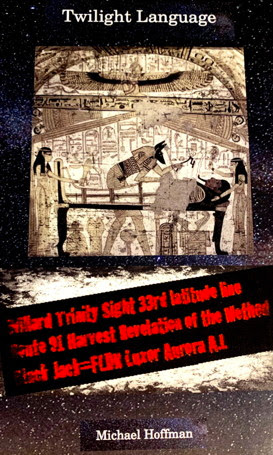CONTENTS
I. The Fatherland Betrayed by The Republic by Jean Raspail
II. Roots, Not Symptoms:
A Reply to Jean Raspail by Michael Hoffman
***
The Fatherland Betrayed by The Republic
by Jean Raspail
Le Figaro magazine (France), June 17, 2004
http://www.lefigaro.fr/debats/
(Translated from the French By Peter Wakefield Sault)
I circled around this topic like a dog handler in the presence of a parcel bomb. It is difficult to approach it directly without having it explode in one's face. There is danger of civilian death. It is, however, the main line of investigation. I hesitated. Especially as in 1973, by publishing "The Camp of The Saints," I had already said it all. I do not have a great deal to add except to say that the deed is done.
Because I am convinced that the fate of France is sealed, because "My house is their house" (Mitterand), inside "Europe whose roots are as much Muslim as Christian" (Chirac), because the situation is moving irreversibly towards the final swing in 2050 which will see French stock amounting to only half the population of the country, the remainder comprising Africans, Moors and Asians of all sorts from the inexhaustible reserve of the Third World, predominantly Islamic, understood to be fundamentalist Jihadists, this dance is only the beginning.
France is not the only concern. All of Europe marches to its death. The warnings are precise - the UN report (which delighted some), incontrovertible work by Jean-Claude Chesnais and Jaques Dupachier, in particular - yet they are systematically buried and the National Institute for Demographic Studies [INED] pushes disinformation.
The almost sepulchral silence of the media, governments and community institutions on the demographic crash of the European Union is one of the more striking phenomena of our time. When there is a birth in my family or in the homes of my friends, I cannot look at this baby of our house without reflecting upon that which prepares itself for him in the negligent governments and what he must confront in his manhood...
Without taking into account that those of French stock, bludgeoned by the throbbing tom-tom of human rights, of "the welcome to the outsider", of the "sharing" dear to our bishops etc., framed by a whole repressive arsenal of laws known as "anti-racist", conditioned from early childhood with cultural and behavioral "crossbreeding", with the requirements of "plural France" and with all the by-products of old Christian charity, will no longer have any other means but to lower their children and to merge without kids into the new mould French "citizen" of 2050.
All the same let us not despair. Without doubt, there will remain what is called in ethnology some isolates, some powerful minorities, perhaps about 15 million French - and not necessarily all of the white race - who will still speak our language more or less unbroken and will insist on remaining impregnated with our culture and our history such as was transmitted to us from generation to generation. It will not be easy for them.
Facing the various "communities" which one sees being formed today on the ruins of integration (or rather on its progressive reversal: it is us whom one integrates into "the other", now, and more the opposite) and which in 2050 will be permanently and without doubt institutionally installed, it will be to some extent - I seek a suitable term - about a community of French continuity. This one will be based on its families, her birth-rate, its endogamy of survival, its schools, its parallel networks of solidarity, perhaps even its geographical areas, its portions of territory, its districts, even its places of safety and, why not, its Christian, and catholic faith with a small chance if this cement still holds.
That will not please. The clash will take place some time or another. Something like the elimination of the Kulaks by suitable legal means. And then?
Then France will no longer be peopled, all confused origins, except by hermit crabs who will live in shells left behind by the representatives of a species gone forever which was called the French species and unannounced, by one does not know which genetic metamorphosis, that which in second half of this century will have been clothed with this name. This process has already started.
There is one second hypothesis that I could not formulate otherwise than privately and which would require that I consulted my lawyer beforehand, it is that the last isolates resist until initiating a kind of reconquest undoubtedly different from the Spanish but taking as its starting point the same reasons. This will be a perilous story to write about. It is not me who will be charged with this, as I have already done my bit. Its author has probably not yet been born, but this book will see the light of day at the appointed time, I am sure...
What I cannot understand and which plunges me into an abyss of sorry perplexity, is why and how so many informed Frenchmen and so many French politicians contribute knowingly, methodically, I don't dare to say cynically, with the certain immolation of France (let us avoid the qualifier of eternal which disgusts the beautiful consciences) on the altar of an aggravated utopian humanism.
I ask myself the same question in connection with all these omnipresent associations of rights to this, rights to that, and all these leagues, these think tanks, these subsidized headquarters, these networks of manipulators insinuated into all the wheels of State (political education, judiciary, parties, trade unions, etc), these innumerable petitioners, these correctly consensual media and all these "clever" folks who day after day and with impunity inoculate their anaesthetic substance into the still healthy body of the French nation.
Even if I can, at a pinch, credit them on the one hand with sincerity, it sometimes saddens me to admit that they are my countrymen. I feel the sting of the renegade word, but there is another explanation: they confuse France with the Republic. "Republican values" have deteriorated ad infinitum, one knows it fully, but never with reference to France. However France is from the outset a country of [common] blood. On the other hand, the Republic, which is only one shape of government, is synonymous for them with ideology, ideology with a capital "I", the major ideology. It seems to me, to some extent, that they betray the first for the second.
Among the flood of references which I accumulate in thick files in support of this assessment, here is one which under the [deceptive] appearance of a good child illuminates the extent of the damage well. It is drawn from a speech by Laurent Fabius to the socialist congress of Dijon, 17th May 2003: "When the Marianne [statue of Liberty] on our town halls takes the beautiful face of a young immigrant Frenchwoman, this day France will have crossed a line while bringing alive fully the values of the Republic..."
Since we are [left] with quotations, here are two, to conclude: "No amount of atomic bombs will be able to dam up the tidal wave comprising human beings in their millions which one day will leave the southernmost and poor part of the world, to erupt the relatively open spaces of the wealthy northern hemisphere, in search of survival." (President Boumediene, March 1974.)
And this one, drawn from the 20th chapter of 'Revelations': "The thousand years is expired. Those are what departs the nations which are at the four corners of the Earth and which are equal in number to the sand of the sea. They will go forth in expedition across the surface the Earth, they will surround the camp of the saints and the beloved city."
Roots, Not Symptoms: A Reply to Jean Raspail
by Michael Hoffman
Copyright © 2004 by revisionisthistory.org
How strange--not one word from Jean Raspail about who is really at fault for the invasion of France--the French themselves! Who were (and are) too hedonistic and selfish to average three or more French children per couple. Into this vacuum quite naturally (i.e. by the iron law of biology) rush those people who have enough sense to reproduce themselves (the Muslims) and who need lebensraum. Raspail deals, as do so many others, with symptoms and scapegoating: "those politicians" and that "sepulchral media" who vex "the still healthy body of the French nation."
I assure Monsieur Raspail that the French people are desperately sick, not healthy, and that the "sepulchre" was built by the French themselves and the bones one finds there are of the aborted children who would have obstructed the multiple vacations, the second house, the third car. This sepulchre is also peopled by the spectre of millions of French children who were never conceived, for the same reasons.
Those white nations which do not have sufficient spark of life to reproduce themselves are indeed doomed, but this is no "conspiracy." These are the inevitable wages of the Masonic, "secular Republic" that is France. The same is true for Italy, where the Catholic Church has auto-destructed and Germany, Spain, Sweden...all secular, all playboys and playgirls.
One cannot merely pay lip service to Christianity, tossing a bone to a mere nostalgia. The French, or for that matter the American intellectuals, even on the Right, dare not look to see what culture and religion prevailed when Charles Martel marched to Poitiers in 732, when Isabella reconquered Granada in 1492, when Pius V was victorious at Lepanto in 1571 and Nicholas, Graf von Salm in Vienna in 1529 and John Sobieski in that same city in 1683.
The West today, ruled ideologically by the spirits of Jean Jacques Rousseau, Charles Darwin, Albert Pike, Sigmund Freud and Menachem Mendel Schneerson cannot conquer, except from the cockpit of a glorified airborne video game attached to missiles.
Who is to blame for the demise of Europe-- the healthy, fertile Muslims or the anemic, self-extinguishing denizens of the House of Usher? If lebensraum was a virtue for the Germans is it a vice for the Muslims? The most primitive pagan in the jungle knows what the "advanced" Europeans do not know, that sex without children is death!
And the current "Crusade"? It was only forty years ago that Jacqueline Kennedy wore a black veil at the funeral of her assassinated husband, and Christian women throughout Europe and America--sophisticated women of the middle and upper classes--wore head coverings in church. Now crusader Neocons are on a campaign to "free Muslim women" from standards of propriety and modesty not so different--at least in spirit-- from what prevailed universally in the West as recently as four decades ago.
France has banned girls from wearing head scarves in its public schools, lest the girls appear too modest, and this in a France where rectums and genitals are on display on every street-corner kiosk, yet there is a morbid fear of the least display of chastity.
The Muslims rightly despise us because we have lost all self-respect; because we are not the people of the West any longer, but the people of the alchemical crucible of constant, ruinous transvaluation.
The West cannot turn its back on God and retain any territory anywhere, and when I say God I am not speaking of the god of the rabbis.
Roots, not symptoms, Monsieur Raspail.
***











 Child survivors of the Israeli Holocaust in Gaza
Child survivors of the Israeli Holocaust in Gaza










